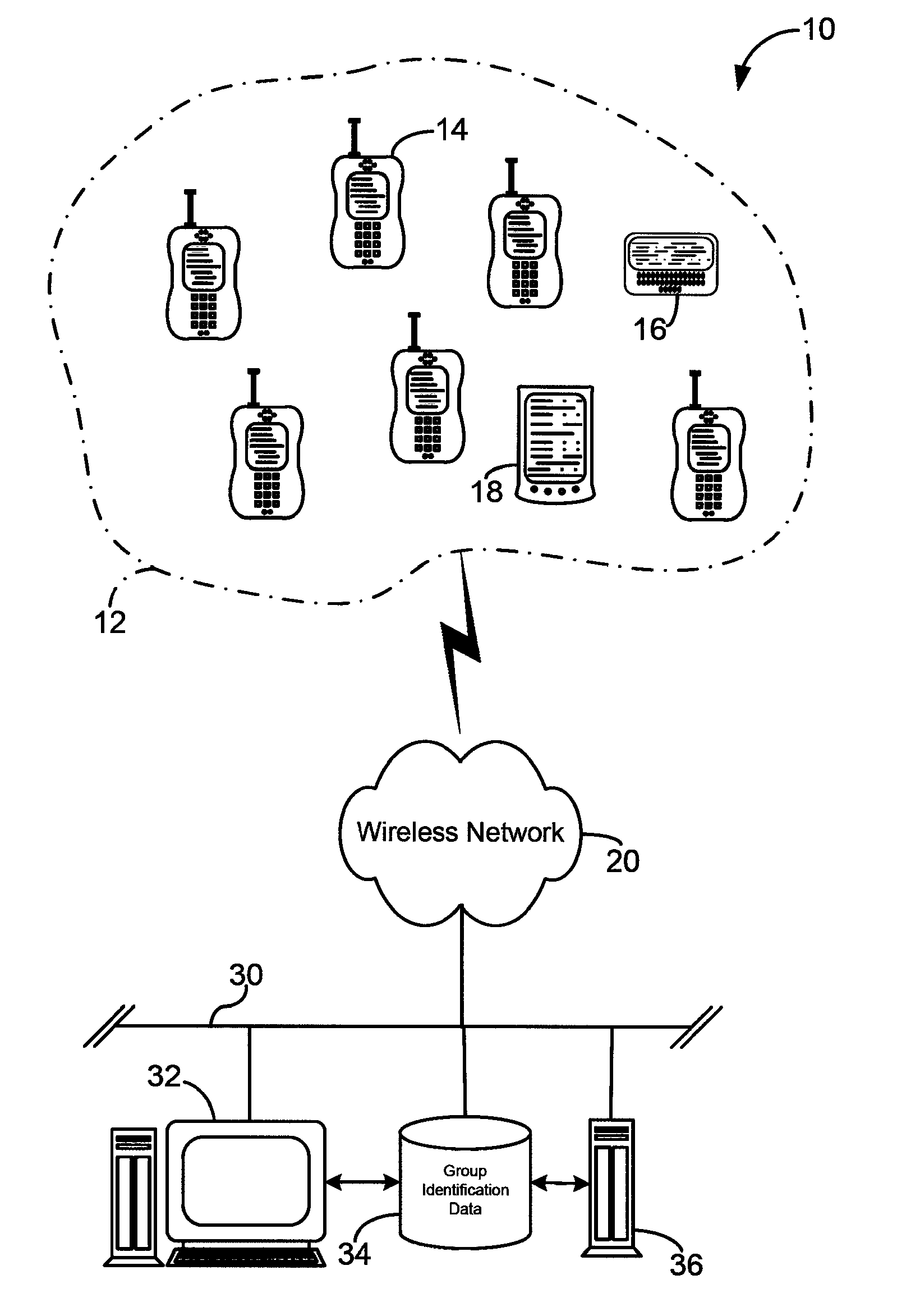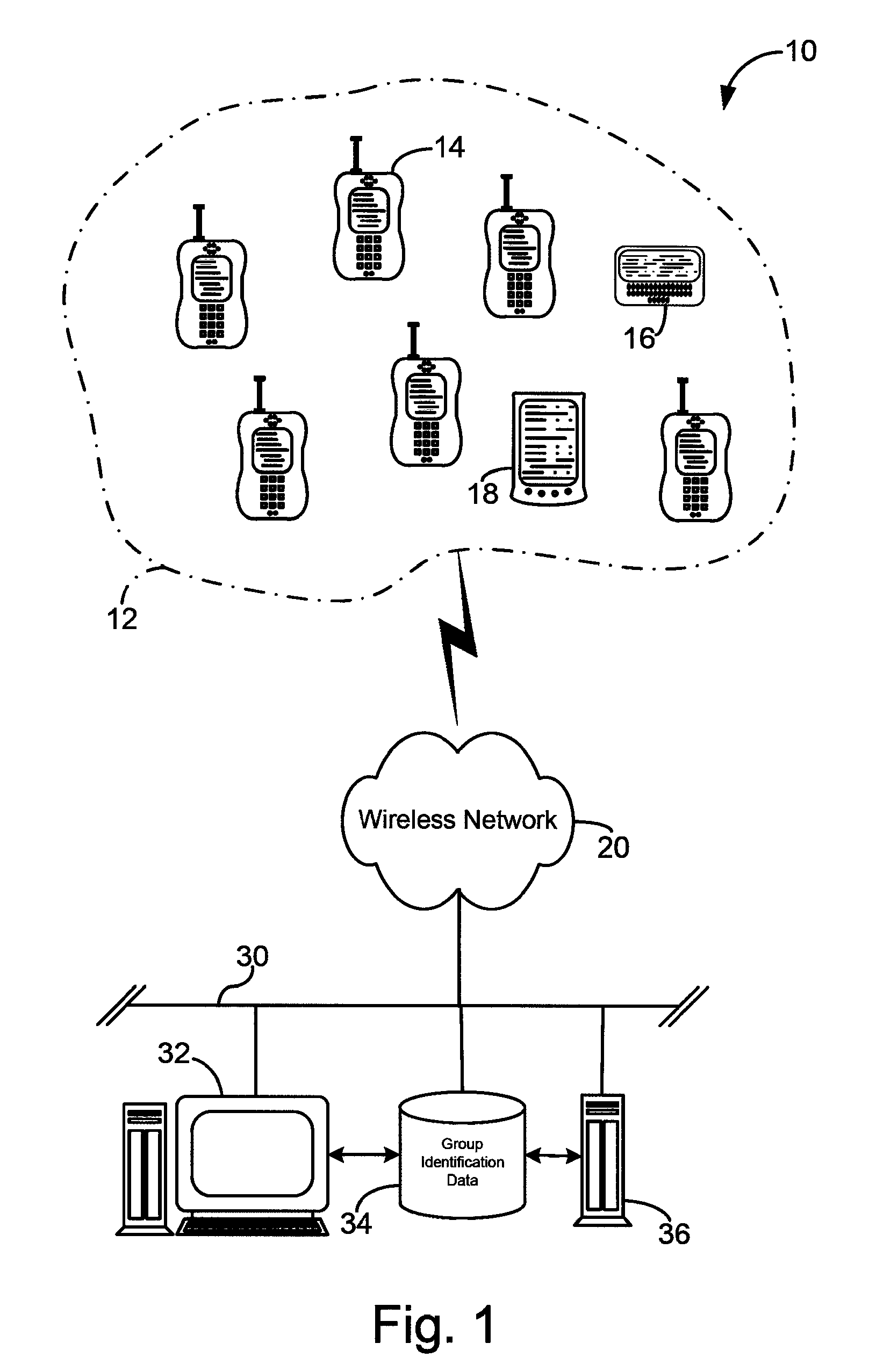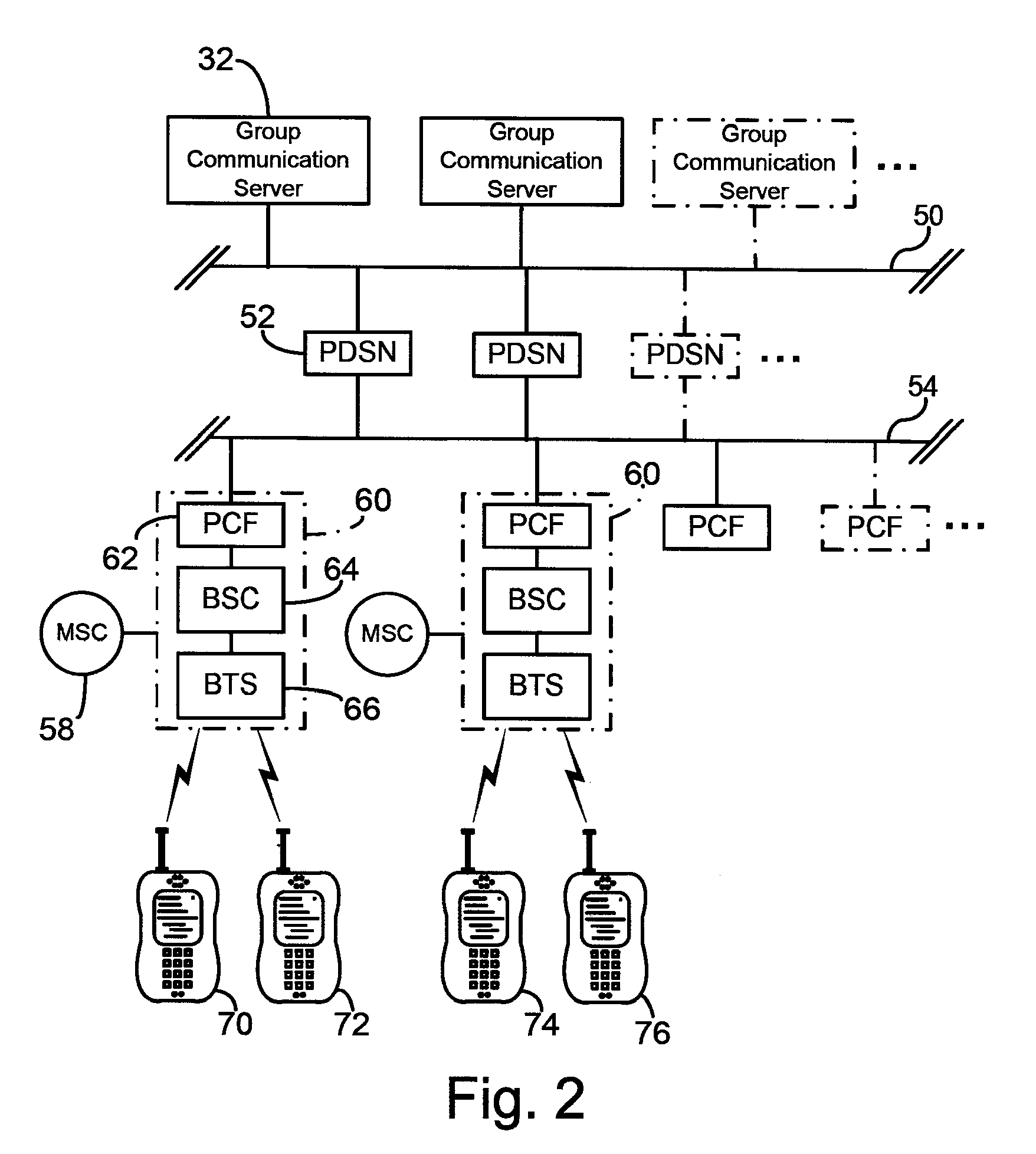System and method for real-time performance and load statistics of a communications system
- Summary
- Abstract
- Description
- Claims
- Application Information
AI Technical Summary
Benefits of technology
Problems solved by technology
Method used
Image
Examples
Embodiment Construction
[0035]In this description, the terms “communication device,”“wireless device,”“wireless communications device,”“PTT communication device,”“handheld device,”“mobile device,” and “handset” are used interchangeably. The terms “call” and “communication” are also used interchangeably. The term “application” as used herein is intended to encompass executable and non-executable software files, raw data, aggregated data, patches, and other code segments. The term “exemplary” means that the disclosed element or embodiment is only an example, and does not indicate any preference of user. Further, like numerals refer to like elements throughout the several views, and the articles “a” and “the” includes plural references, unless otherwise specified in the description.
[0036]With reference to the figures in which like numerals represent like elements throughout, FIG. 1 illustrates one embodiment of the system 10 for sharing group media among one or more wireless telecommunication devices in a PTT...
PUM
 Login to View More
Login to View More Abstract
Description
Claims
Application Information
 Login to View More
Login to View More - R&D
- Intellectual Property
- Life Sciences
- Materials
- Tech Scout
- Unparalleled Data Quality
- Higher Quality Content
- 60% Fewer Hallucinations
Browse by: Latest US Patents, China's latest patents, Technical Efficacy Thesaurus, Application Domain, Technology Topic, Popular Technical Reports.
© 2025 PatSnap. All rights reserved.Legal|Privacy policy|Modern Slavery Act Transparency Statement|Sitemap|About US| Contact US: help@patsnap.com



